Back pain often starts in the feet. Suitable insoles can help those afflicted to restore a sense of harmony to their bodies.
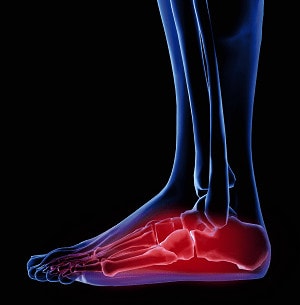 As architects and engineers know only too well, cracks in roof structures are generally an indication of problems with static. This usually begins from the ground up. The human musculoskeletal system is certainly slightly more complex than the average building, but the principle remains the same. The source of back and neck pain is often not to be found anywhere along the spine, but in the place where our bodies are in contact with the ground, namely our feet.
As architects and engineers know only too well, cracks in roof structures are generally an indication of problems with static. This usually begins from the ground up. The human musculoskeletal system is certainly slightly more complex than the average building, but the principle remains the same. The source of back and neck pain is often not to be found anywhere along the spine, but in the place where our bodies are in contact with the ground, namely our feet.
From an anatomical perspective, standing and walking place great strain on the body. These actions are not just felt on the heels, toes and balls of the feet, but their effects are also dispersed among many other sensitive areas. The receptors in the feet play a major role in regulating balance, swiftly registering uneven ground and helping us to adjust. If we accept that the human foot is a work of art, composed of 26 bones in addition to ligaments and muscles, then it’s clear that as a general rule, only specialists such as orthopaedists, podiatrists, orthotists, chiropractors and osteopaths can really understand the complexities of the foot as a whole.
Warning signs from irregular strain
Chain reactions feature prominently in this area. Even the slightest deviation from ideal conditions can result in large differences for those affected. One of the factors in play here is the shape of a foot. This alone can be sufficient to send warning signs high up the back and into the neck when the feet are subjected to irregular strains. In this way, flat-footed people run the risk of harming their pelvis, as this causes it to gradually shift forward. For people with hollow feet, the trend is reversed with the pelvis likely to shift backward.
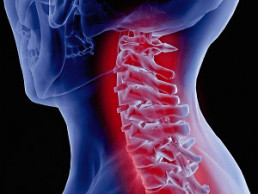
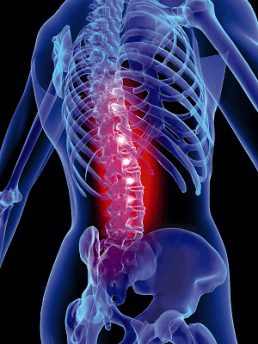
Alongside differing foot shapes, misaligned feet also represent another cause of back problems. Frequent, long-lasting movements on hard surfaces can cause the arch of the foot to flatten out considerably, fatiguing the muscle structures. In addition, there is also a widespread tendency to point feet outwards in order to improve stability. Should both these issues occur simultaneously, there is a serious risk of severe, long-term back problems. This is a particular cause for concern if displaying strain behaviour, when the ratio of pressure to load between the heel, outside of the foot and big toe is no longer ideally balanced and in proportion.
Suitable insoles offer a solution
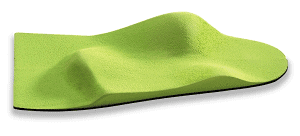 So, what are the options? If the foot static changes, the body responds by modifying the positioning of the legs. The spinal column also shifts to correspond with the changes elsewhere, which can only be a negative thing. The muscle structure of the affected person falls victim to this new strain. The consequence is tension which can result in long-term posture problems and is often also the reason for chronic back pain often associated with this. Is this fate? No. This type of back pain has traditionally been successfully treated with insoles. People who walk with insoles in their shoes ensure that their feet are gradually realigned into a healthier position, thereby supporting the body in regaining its ideal equilibrium. This also applies to wearing shoes, particularly occupation safety footwear. Strain on the feet can be particularly high in the workplace, because employees are often on their feet on hard surfaces such as factory floors for long periods. The important thing to consider here is that the insoles should not just be perfectly adapted to the individual’s foot contours, but also their gait.
So, what are the options? If the foot static changes, the body responds by modifying the positioning of the legs. The spinal column also shifts to correspond with the changes elsewhere, which can only be a negative thing. The muscle structure of the affected person falls victim to this new strain. The consequence is tension which can result in long-term posture problems and is often also the reason for chronic back pain often associated with this. Is this fate? No. This type of back pain has traditionally been successfully treated with insoles. People who walk with insoles in their shoes ensure that their feet are gradually realigned into a healthier position, thereby supporting the body in regaining its ideal equilibrium. This also applies to wearing shoes, particularly occupation safety footwear. Strain on the feet can be particularly high in the workplace, because employees are often on their feet on hard surfaces such as factory floors for long periods. The important thing to consider here is that the insoles should not just be perfectly adapted to the individual’s foot contours, but also their gait.
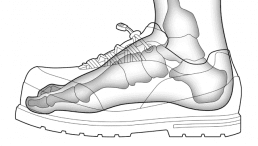
Passive and active soles
There are in fact two styles of insoles – passive and active. Passive insoles support the wearer by fixing their feet in the optimal position, thereby passively ensuring the ideal posture. In other words, this means correcting possible deformations or postural issues by raising and propping the arch of the foot. Active insoles (also known as “proprioceptive” or “sensomotoric” insoles” are primarily used when the foot and any possible misaligning, influenced by the movement of muscle and tendon tensions, should (can) be corrected. This happens using a neurophysiological stimulation of the sensorial cell on the soles of the feet. Long-standing irritation of these receptors can help to stabilise and re-harmonise the entire muscle structure of the body, including all the way up to the neck and jaw, when applied over a considerable period of time. Furthermore, should the gait be successfully realigned, those painful back problems could soon be a thing of the past.
Would you like to discover more about this subject?
– The uvex safety group offers “sensomotoric insoles” to be worn with safety footwear. If you have any questions, please email expertenblog@uvex.de and we will be happy to help.